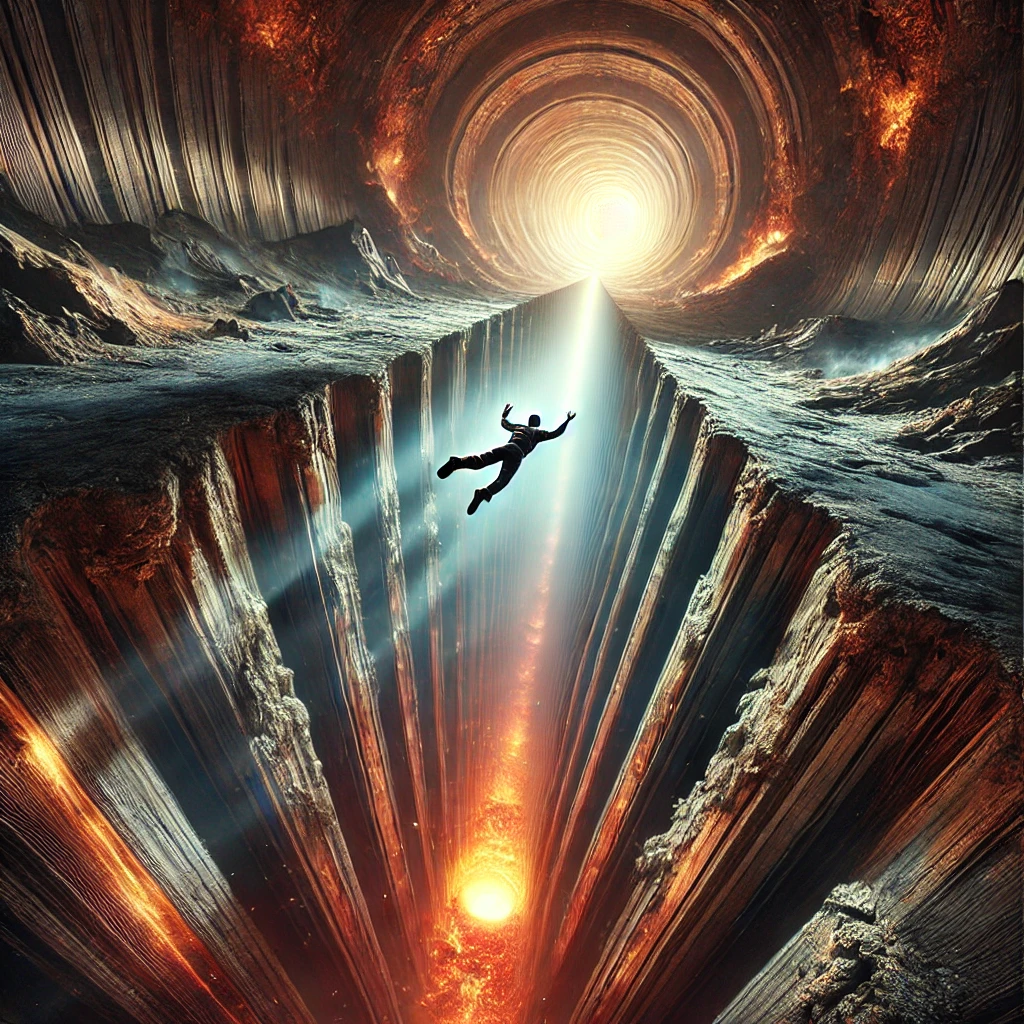Imagine falling into a tunnel that stretches directly through the center of the Earth and coming out on the other side. How long would the journey take? According to physics, the answer is about 42 minutes. This idea, often referred to as the gravity tunnel thought experiment, has fascinated scientists for centuries.
If you were to jump into a frictionless tunnel that cuts straight through the Earth, you would begin accelerating due to gravity. As you fall, gravity pulls you faster and faster until you reach the center of the Earth, where your speed would be at its maximum—about 28,000 km/h (17,400 mph). After passing the center, gravity would begin to slow you down, and you would eventually stop at the surface on the other side, before falling back again in an endless oscillation (unless stopped by air resistance or friction).
Using Newton’s laws of motion and the Earth’s mass distribution, physicists have calculated that this trip from one side of the Earth to the other would take about 42 minutes and 12 seconds. This applies regardless of where the tunnel is located, as long as it passes through the Earth’s center.
In reality, such a tunnel would face many challenges. The Earth’s molten core and intense pressure would make it impossible to construct. If the tunnel were filled with air, friction and air resistance would slow you down, preventing you from reaching the other side. Instead, you would eventually come to rest at the center of the Earth. However, in a vacuum, where air resistance is removed, the full 42-minute journey would be possible.
If the tunnel didn’t pass through the center of the Earth but instead connected two cities at a shallower depth (such as New York to London), the fall time would be less than 42 minutes but still follow the same principle. This is sometimes called a “gravity train” concept, where vehicles could use Earth’s gravity for nearly frictionless transport between distant locations.
While falling through a gravity tunnel remains purely theoretical, it’s an exciting thought experiment that helps us understand gravity, motion, and the structure of our planet. The 42-minute journey through Earth is a fascinating example of how physics can predict outcomes for seemingly impossible scenarios. Even though digging such a tunnel is not feasible, the idea of using gravity for transportation could inspire future innovations in high-speed travel.



